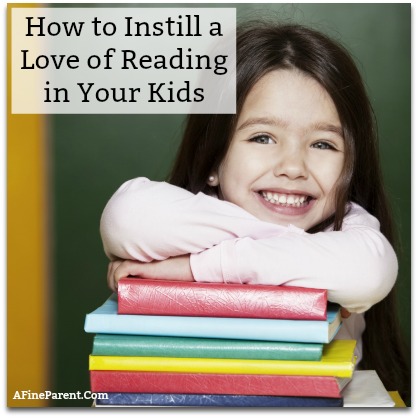 Do you feel your kids need a break from their iPads and other devices that seem to buzz and click all the time?
Do you feel your kids need a break from their iPads and other devices that seem to buzz and click all the time?
Do you think their attention span could be better?
British neuroscientist Susan Greenfield is one of the many researchers who’ve unveiled some frightening and disturbing findings about devices and children’s attention spans. As part of the study, UK teachers were surveyed, and 91% of teachers believe that children’s attention spans are getting shorter as most children choose to spend time on their devices rather than reading.
As a busy mom (as we all are), I often don’t prioritize reading time with my kids. As a speech pathologist, I know better and am frequently asking myself to prioritize that special time with my children.
As I was going holiday shopping last year, I saw something absolutely astonishing at the department store. There, sitting on the ground among the heaps of clothing, shoes, and angst-ridden, busy shoppers, was a little boy quietly reading! I couldn’t believe my eyes. He was so focused and engrossed in his book, he didn’t even look up to notice my gawkish stares. I quickly pulled my sister over to see, and she was also stunned. I felt like I was watching some extraordinary and rare behavior on the Discovery Channel. Nowadays, it seems as though children are lugging their devices wherever they go, not chapter books. Now, if your child is one of these remarkable children, you can stop reading here and move on to another article on this site.
At this point, you may be wondering, well, what can I do about it at this point? They’re hooked for life, aren’t they?
Not really…. All they need is a device diet and some healthy books instead. Think of it as devices, junk food, books, fruits, and vegetables. A healthy, balanced diet requires much of the latter.
So, how can you instill the love of reading in your kids? And even more so, how can you enhance your child’s vocabulary and truly bond with your child?
Below are 10 tips that might make things easier:
1. Let Them Pick the Genre!
 It’s just that simple. Whether they want to read about dinosaurs, ballerinas, ancient history, or baking— let them. You might want to take a trip to the local library and let them choose a whole bunch of books on those topics. In most cases this is just what they need to open their minds to the world of books.
It’s just that simple. Whether they want to read about dinosaurs, ballerinas, ancient history, or baking— let them. You might want to take a trip to the local library and let them choose a whole bunch of books on those topics. In most cases this is just what they need to open their minds to the world of books.
2. Repeat, Repeat, Repeat
If they want to read the same book twenty times in a row, go for it. Scientific studies have proven that children learn through repetition, and you can pretty much count on the fact that they’ll pick up on the vocabulary. Rae Lea Schaper, a consultant, teacher, and creator of preschool curriculums, states:
Repetitious reading reinforces memory skills, sequencing skills and increases vocabulary. These three skills make a basic educational foundation that must be in place for all other learning to occur.
So, if they’re going to gain and learn from all that repetition, it’s well worth it.
 3. Build Connections Through Experiences
3. Build Connections Through Experiences
Is your child hooked on baseball? Then read them a ton of books on the subject, play the sport with them, or take them to a game. Is your child interested in dinosaurs? You might consider taking them to a dinosaur museum or the library to do research. You can have your child draw or write (if they’re able to) their own book about their favorite topic, too.
4. Let Them Talk and Share
Listen as you let your child talk as freely as they desire about the topic. Listen, engage, and share your own past experiences and knowledge on the topic. This will take bonding to a whole new level, as your child feels they can openly express themselves, in turn making reading a desired activity.
This feeling of “sameness” is a critical component of psychologist Gordon Neufeld’s attachment model. As Susan Stiffelman, a licensed psychotherapist, explains:
Their [our kids’] desire to be like us is an important element in their acquisition of language. It also helps the growing child—and adolescent—continue to feel connected to us when we emphasize interests or inclinations that we share with them.
5. Book “Walk-Throughs” and Picture Descriptions
Consider reviewing stories and books after you’ve read them. With younger kids, you may use the pictures and illustrations of the story to revisit important points of a story. This will further enhance learning, memory, and retention of books you’ve read with your child and offer completion and some structure to the activity. With older kids who read by themselves, you can let them share the story with you or their favorite (or least favorite) parts of the story, and help that launch you into a free and open discussion.
6. Work on Print Awareness
 You’d be surprised how many children come into school unfamiliar with the structure of a book. Ask your child, “Where is the title, author, beginning, middle, end, and back of the book? How are the words and sentences written? Left to right? Going up or down? To demonstrate just how important print awareness is, Storch and Whitehurst from Stony Brook University have found that children who have developed concepts about print are more likely to gain from the formal literacy instruction that is provided at school.
You’d be surprised how many children come into school unfamiliar with the structure of a book. Ask your child, “Where is the title, author, beginning, middle, end, and back of the book? How are the words and sentences written? Left to right? Going up or down? To demonstrate just how important print awareness is, Storch and Whitehurst from Stony Brook University have found that children who have developed concepts about print are more likely to gain from the formal literacy instruction that is provided at school.
7. Developmental and Vocabulary Level
Even though any reading is better than no reading, it’s a good idea to ensure the books you’re reading are on your child’s developmental level. In order for this to be an enriching learning experience, the books should contain some novel language and vocabulary terms.
Karen Kindle from Reading Rockets cites several studies in her article about vocabulary development and read-alouds, stating that reading fills a gap in exposure to vocabulary in children. She also writes that reading aloud to children is also engaging and increases their motivation and attention!
8. Be the Animation!
As I’ve mentioned in my previous article, 10 Essential Communication Skills That Will Make You a Better Parent, gestures and body language are super important. Here, they may be used to motivate and interest your child in the language, vocabulary, and plot of a story. Just picture yourself reading in a computerized and monotonous voice. OK, pause. Now, what did you think of that? Not so great. Now, try picturing yourself with an energetic, lively tone. Way better, no?
9. Choose the Right Time
You probably have a good idea of when your child is at his/her most energetic time of the day and when they’re the most receptive and mellow. There’s a reason why many parents have adopted the ‘bedtime story’ ritual. It has a lot to do with the plain fact that most children are their calmest, well-tempered selves at this time of day. I love to take advantage of bedtime as the perfect time to read with my kids and get them excited about rhyming, cars, and silly monkeys.
10. Build Their Independence
Let them read you the story for a change. Give your child the book and have them tell you what happened. Give them the license to be creative and use their imagination to come up with their own tale, with the pictures as their guide.
 The 2-Minute Action Plan for Fine Parents
The 2-Minute Action Plan for Fine Parents
Consider this the next time you read with your younger child or ask your older ones to set aside their devices and pick up a book instead:
- Is this a book your child enjoys reading? Are they excited to open this book?
- Is it developmentally appropriate? Does it have enriching vocabulary?
- With younger ones, are you reading with animation and character?
- With older ones, how much time are you spending talking, sharing, and bonding about the topics/stories they are reading about?
The Ongoing Action Plan for Fine Parents
Over the next week, set aside a specific time for reading that suits your child’s needs. Get them excited about reading by letting them pick the book, perhaps at the bookstore or local library. Don’t worry about the genre— let them pick up whatever they like, even if it is a picture book, and get them going.
And then, make sure you talk and share. Not only will you be building upon the experience and momentum of reading, but you and your child will also build upon your own relationship and bond in a special way!
That’s a lovely anecdote! It’s so refreshing to see a child lost in the pages of a book these days. It reminds me of simpler times when imagination was fueled by stories rather than screens. Speaking of focus and passion, my son gets that same intense concentration when he’s playing Drift Hunters. It’s great to see him so engaged, even if it’s not a book. Maybe there’s hope for the next generation yet!
It’s definitely a worry how glued kids are to screens these days. That statistic about teachers is pretty alarming. I wonder if encouraging simpler, more engaging offline activities would help. Perhaps things like board games, creative projects, or even just getting them outside for some good old-fashioned running around. Thinking back, I remember being so engrossed trying to beat my high score in the Dinosaur Game on the computer, but even that felt different than the constant stimulation of tablets!
I have read through your blog, your blog is very or very detailed it, thank you for sharing, I hope to read more of this good blog.
I have read through your blog, your blog is very or very detailed it, thank you for sharing, I hope to read more of this good blog.
I love reading your articles and I shared it with my friends.People also like it and give good feedback. Thank you.
Great posts,I have learned some useful tips,thank you for sharing : )
avriq
Great posts,I have learned some useful tips,thank you for sharing : )
Great article – reading is so important. One of my children is a reluctant reader (to say the least) but we have come to a compromise as he is so keen on his electronic gadgets that he will only read a book if it is on an e-reader.
It’s not as aesthetically pleasing as your little boy in the store but I guess you pick your battles. At least the end product is the same (no-one’s getting me to give up my ‘proper’ books though!)
Children mimic their parents. So the question we should ask ourselves, are they seeing me reading any books? If not, start reading in front of them. Instruct them not to disturb you when you are reading. They will understand this is something important for you, so is important for them.
My children are 11 and 12. Because of anxiety issues, I cannot get them to go into a library. My 12 year old prefers graphic novels. My 11 year old has declared she does not like to read. (This is heartbreaking for a bookworm like me.) How can I encourage reading? I do read to my son when I can.
Great article with great points, and yes, getting off of our own screens is paramount to modeling what we want them to embody.
Cheers,
Katie
Also, I think it’s important that they see us reading too. I’m trying to break the habit of reading on my phone in front of them because how can I tell them that they need to limit screen time while I’m on my phone. So I’m making an effort to read a book at their sporting events and at the pool (I don’t have much time to read my own books at home). Even if it’s not for as long as I’d like. They often ask, “What are you reading, Mom?”
Yes, that’s such an important point – we teach best by example. Our children really notice what we do.
Books
i woul dlike to be a part of this course